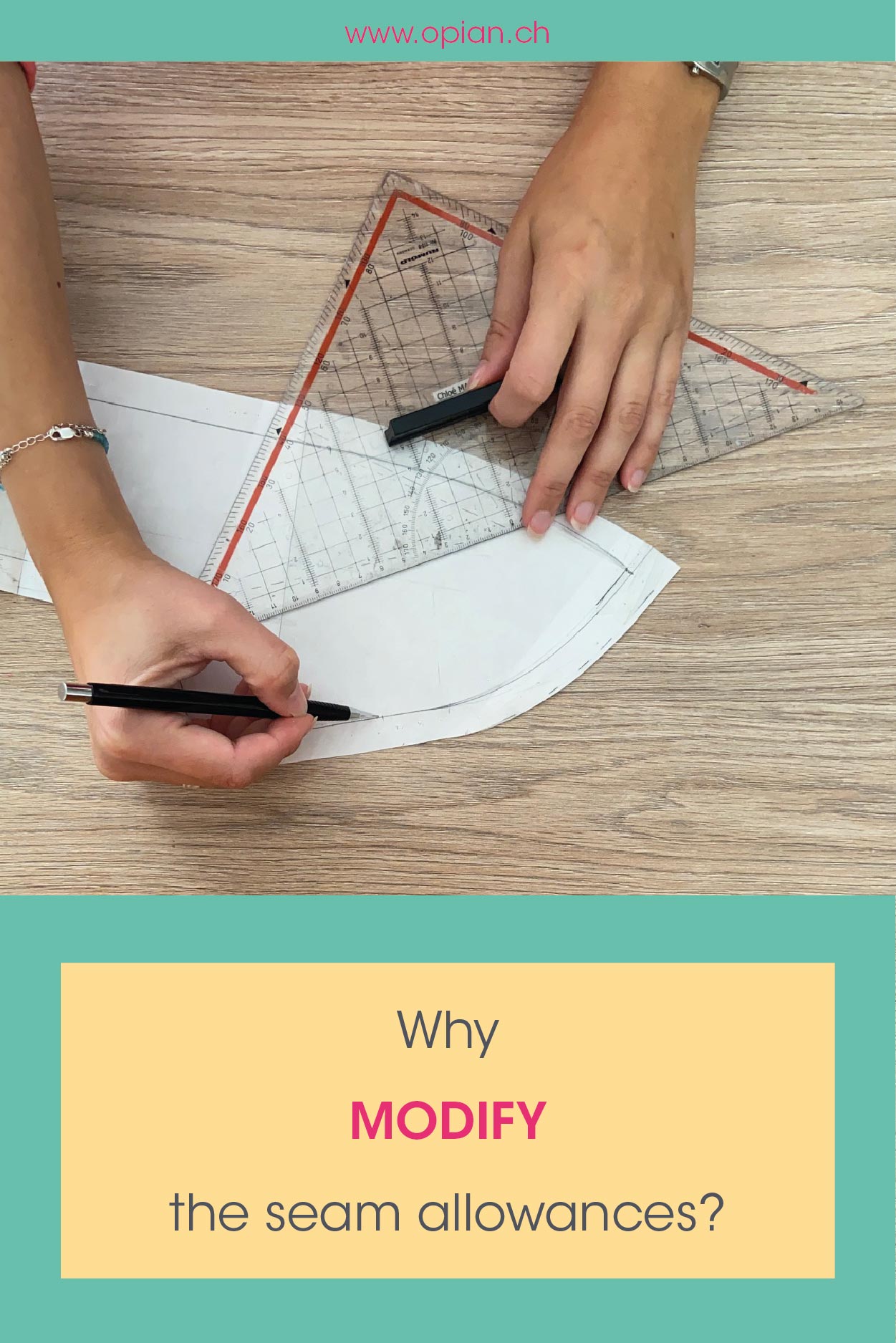Sewing Tip | Why modify the seam allowances |
Published :
10/21/2021 17:45:30
Categories :
Sewing Tips
I like to make my own sewing patterns because they are made according to my taste. However, I also sometimes sew those of other brands. I choose it because I like it and because it is a design that I don't usually do, but also to see the instructions, layout, information, illustrations, ways of sewing and also the seam allowances. Many brands offer seam allowances included in the pattern, so you don't have to start a project with something not very fun.
When launching the Opian sewing patterns, I thought that the size of the seam allowances was very personal according to our own sewing preferences, but also that the outline of the pattern was the most important. Therefore, the first woven patterns are without seam allowances (in the works to being updated). However, I realised that it could put off some people and especially beginners, because it is not always easy to manage them. So I decided to add the seam allowances on all the new patterns while keeping the outline of the pattern itself. Personally, I don't consider making a sewing pattern without having the exact layout of each piece. Indeed, this is what defines the curves, the lengths, the cuts between the different pieces, and therefore the shape of the garment.
The seam allowances are therefore 1.5cm for woven garments and 0.7cm for swimsuits. The 0.7cm for swimsuits correspond to the ideal width of the elastic to use. As for the seam allowances of the clothes, the choice is more judicious and is explained in 4 reasons below.

Made to measure
The goal when you sew for yourself or your loved ones is to have suitable clothes with impeccable finishes. Seam allowances are an integral part of the quality of a garment. They make it possible to make a garment as pretty on the inside as on the outside, and to use haute couture methods instead of ready-to-wear.
Fitting
It is always recommended to make a toile before cutting in the pretty fabric, or at least the part needed. I know it's not always easy to get started, but it's worth it for some models.
Without toiling, the fitting step is essential in order to check if the fit is good. This is when the size of the seam allowances comes into play. Indeed, one centimetre does not allow much room to make changes. Adding 0.5cm gives much more flexibility for the fit. For straight seams you can even go up to 2cm if necessary. But be careful, more than 1.5 cm in the curves and they will hamper the volumes.
Cutting
When cutting a fabric, it is so easy to move around and take out a millimetre or two of the seam allowances by mistake, especially with fluid fabrics. And it's a shame to have an unwanted notch even if it's inside the garment.
In addition, some fabrics fray quickly and without much handling even after sewing, which is almost impossible to repair.
Sewing
As with cutting, it is easy to deviate slightly from your path when sewing. Having 1.5cm always allows for a margin of ease, unlike when there is only 1cm.
In addition, this makes it possible to modify the garment while making it. Indeed, once on you, you may have to make changes. It is therefore a shame to have a poorly adapted garment because of a simple seam allowance that is not wide enough.
After a while, it is also easier to make changes to the garment. For example, if the belt needs to be slightly enlarged, the material is there, so the garment is more durable.
In conclusion, all these reasons come together to come back to the two important points which are, nice finishes and the possibility of alteration for a durable garment. The seam allowance of 1.5 cm, in general, is therefore ideal.

